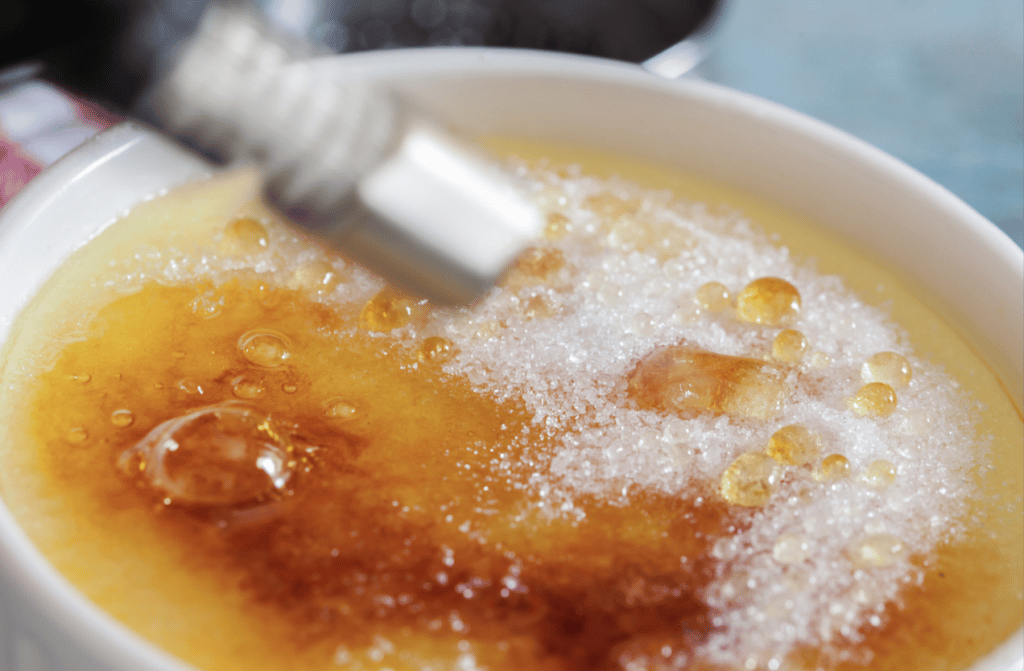Here is a recipe for the best creme brulee and tips for making the perfect custard
Did you know the most popular dessert in the world is creme brulee? This French dessert was introduced by Francois Massialot, a chef in the kitchen of the Duke of Orlean, who wrote about its recipe in a book back in the 17th century. Creme brulee is a creamy, pudding-like, baked custard with a brittle top of melted sugar that cracks when you gently tap it with a spoon. The custard is made with heavy cream, eggs, sugar, and vanilla and should be served cold.
We are heading into the sweetest part of the year (can we just call it dessert season?) From October through December, Americans bake up cookies, pies, seasonal candies, and more. Of course, desserts are good to have year-round. They’re irresistible, comforting, and downright tasty!
Tips for Making the Best Crème Brûlée
Tempering the Eggs
To avoid the eggs curdling when you add the hot cream mixture to the yolks, you must gradually raise the temperature of the egg combination to that of the cream. This is called tempering.
Pour one ladleful of the hot cream into the egg mixture while whisking continuously to accomplish this.
Your combined cream and egg combination should result in a smooth liquid base if everything is done correctly. Small chunks of egg are acceptable, but you must start over if the mixture begins to resemble scrambled eggs.
Strain the mixture to get rid of any little egg fragments once you’ve added all the cream.
Cooking the Custard
In a matter of seconds, custard may change from perfectly cooked to overcooked. Use a bain-marie, which is essentially a chef’s way of saying “hot water bath,” to ensure that the custard cooks gradually and uniformly. It aids in the gentle, even cooking of the custards.
Punch small holes in a piece of aluminum foil (to let steam escape) and cover the pan with the ramekins. This helps control the temperature and, therefore, the consistency of the custard.
To prevent the custard from heating too quickly from the bottom up, set the ramekins on top of a tea towel in the water bath, which has the added benefit of preventing them from floating around.
Brûléeing the Top
The top of the custard should be brûléed after it has been baked and chilled. Using a creme brulee torch, the sugar is melted into a thick, brittle crust by first lightly dusting it on the surface of the cold custard.
The crust will begin to burn if there is too much sugar present before melting evenly. If you use too little, it will just dissolve in the custard.
The sugar is brûléed twice, which results in a more even melting of the sugar grains and a lovely, homogeneous caramel color. Additionally, it reduces the possibility of overheating the sugar during the caramelization process, which can result in bitter, burnt sugar.
Hold the flame of your torch about 4 inches from the surface of the sugar. Using a circular motion, move the flame across the surface. The sugar will at first begin to bead up and then will eventually solidify into a hard sugar crust. You want to make sure all the sugar granules have melted and the sugar has at least a tint of caramel color. The longer you torch the surface, the darker it will become, and the more bitter the sugar crust will be.
Dessert First! The Best Creme Brulee
There are lots of days throughout the year dedicated to desserts. October 14 happens to be National Dessert Day. Try making this delicious creme brulee!

